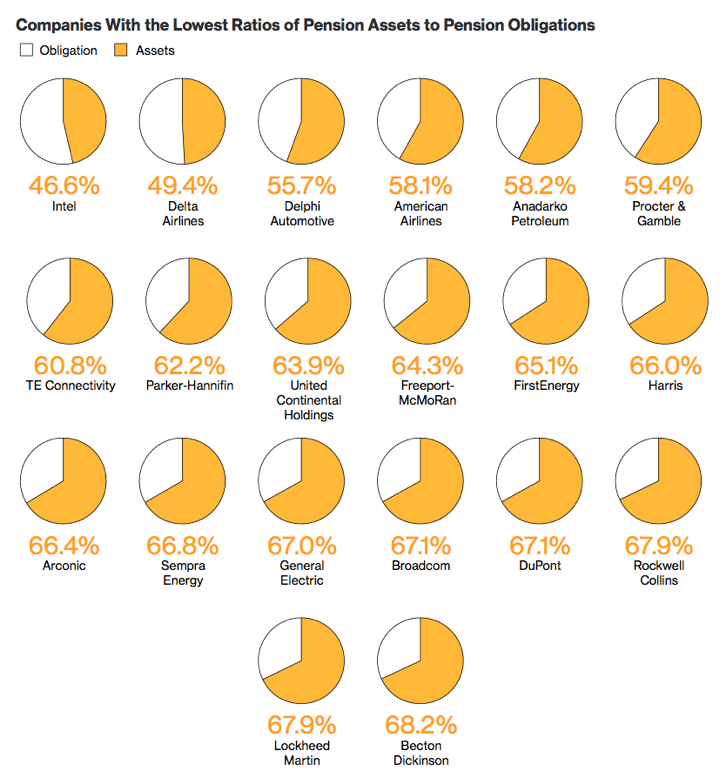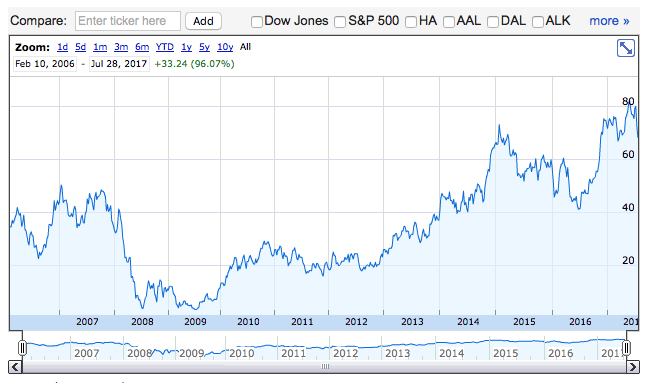In addition to data on underfunded state pension funds, Bloomberg also has an infographic on private pensions: S&P 500’s Biggest Pension Plans Face $382 Billion Funding Gap. There are at least 20 large corporations that have put aside less than 70% of what they need to pay out their estimated pension obligations. This is even worse than many state governments, which at least have the ability to increase taxes. Here’s the full list along with their specific funding ratios:

United Airlines was the largest private pension default in US history. I must admit, I don’t really understand the laws behind private pension obligations. In 2002, United Airlines filed for Chapter 11 bankruptcy. In 2005, a federal bankruptcy judge ruled that United Airlines could default their pension obligations and turn the management of pensions over to the Pension Benefit Guaranty Corporation (PBGC). According to this NYT article, the total shortfall was estimated to be $9.8 billion. Even after the PBGC put up $7.3 billion, this still resulted in a significant cut in promised benefits to many retired workers.
Here’s United’s stock price since emerging from bankruptcy in 2006 (via Google Finance):

Yet today, I still see United Airlines on this list at 64% funded. I suppose these are Continental Airlines pensions due to their 2010 merger. American Airlines is also on this list at 58% funded (they also tried to dump their pensions back in 2012). I hope these airlines shores up their pension funds while their stock prices are reaching new highs.
The PBGC has never required taxpayer money and is normally funded by insurance premiums, but it could require a bailout if future pension defaults exhaust PBGC funds. I wonder what kind of future return figures are used in these estimates. If they are too optimistic, the situation could be worse than pictured above.
 The Best Credit Card Bonus Offers – 2025
The Best Credit Card Bonus Offers – 2025 Big List of Free Stocks from Brokerage Apps
Big List of Free Stocks from Brokerage Apps Best Interest Rates on Cash - 2025
Best Interest Rates on Cash - 2025 Free Credit Scores x 3 + Free Credit Monitoring
Free Credit Scores x 3 + Free Credit Monitoring Best No Fee 0% APR Balance Transfer Offers
Best No Fee 0% APR Balance Transfer Offers Little-Known Cellular Data Plans That Can Save Big Money
Little-Known Cellular Data Plans That Can Save Big Money How To Haggle Your Cable or Direct TV Bill
How To Haggle Your Cable or Direct TV Bill Big List of Free Consumer Data Reports (Credit, Rent, Work)
Big List of Free Consumer Data Reports (Credit, Rent, Work)
Speak Your Mind